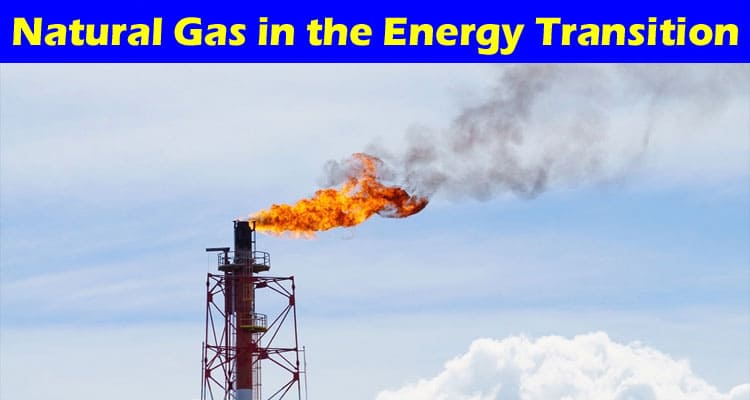Natural gas will continue to expand as energy costs decline and policy incentives encourage further adoption in buildings, industry, and transport. But this expansion must not aggravate lock-in effects that slow the transition from fossil fuels.
The world’s largest, emissions-intensive economies must materially shift their energy mix. This will require new technologies like renewables, energy efficiency, and carbon capture and storage. You can learn more about renewable energy sources and how you can benefit from them on power to choose in texas.
Cost
As a result of innovations in extraction and production, natural gas has become significantly cheaper. It is also a cleaner fuel than coal, producing fewer sulfur dioxide emissions (a significant contributor to acid rain) and less carbon dioxide and particulate matter. Additionally, it is highly flexible and can easily integrate renewable energy sources into the grid.
Furthermore, natural gas prices do not fluctuate significantly, unlike gasoline, which can spike in price. This is especially true because of extensive, dependable underground piping system. The piping system delivers natural gas directly to businesses from the fuel source, minimizing the possibility of power lines being down and vehicles running out of gas in remote areas.
As a result of these factors, the role of natural gas production in the transition toward clean energy is likely to straddle multiple quadrants. In markets where the cost of gas is competitive due to low fuel pricing and carbon pricing, it can displace higher emitting fossil fuels such as oil. In addition, the fastest-growing economies, are projected to materially shift their energy mix toward natural gas in the coming decades.
Environmental Impact
The environmental impact of natural gas can vary depending on how it is produced, transported, and used. Generally, it is cleaner than coal or oil and is considered a “bridge fuel” to renewables, displacing these more polluting fossil fuels in the power sector. However, it is essential to consider how natural gas might impact a low-carbon future in terms of its climate impacts and carbon lock-in effects.
One of the significant impacts of natural gas is its methane emissions, which can have a greenhouse effect up to 36 times greater than CO2. These emissions are caused by leakage in the natural gas supply chain (fugitive methane and venting) and by the combustion of natural gas for energy.
Much methane is also released into the atmosphere from landfills and decomposing organic matter in low-oxygen conditions, such as animal waste, sewage, and industrial byproducts. This is known as biogenic methane, and new technologies are being developed to collect this potential energy source.
Natural gas can also be formed deep underground through methanogenesis, whereby tiny microorganisms break down dead organisms and their organic material into a type of methane similar to natural gas. This form of natural gas is sometimes called shale gas or unconventional natural gas, and it can be extracted using new technology and processes.
Energy Security
Until recently, natural gas was regarded as an unwanted byproduct of oil production. As such, it was often discarded and burned off at the extraction site. However, following the oil crisis in the late ’60s and ’70s, associated gas was used as an alternative energy source. Today, it is a vital component of the world’s energy mix and a critical factor in the ongoing energy transition.
Natural gas proponents argue it can play a pivotal role in the energy transition by displacing higher-emission fuels like coal and oil. Some success stories support this view, such as the wholesale displacement of coal by a combination of gas and renewables and policy-driven coal-to-gas switching.
But if we are to achieve the climate goals set out in the Agreement, it will be necessary to eliminate most fossil fuel-related greenhouse gases. This could be a severe challenge to the global gas business as we know it. In particular, it would mean limiting methane leakage and emissions from venting and flaring and reducing fugitive emissions from the gas value chain.
Unfortunately, many of the scenarios that gas advocates reference fail to account for these climate impacts. This is a serious issue because it can lead to poorly designed policies that may hamper the energy transition and delay achieving climate goals.
Technology
Natural gas is a bridge fuel to a more sustainable energy system. Its crucial role is to replace more polluting coal (and oil) as the dominant power generation fuel, with some success stories such as the wholesale replacement of coal by gas and policy-driven coal-to-gas switching in demonstrating its viability as a transitional energy source. In addition, it provides a seasonal balancing role to renewables and can serve as a backup to intermittent sources.
At the same time, it can play a significant enabling role in accelerating and supporting the broader energy transition by reducing carbon dioxide emissions from electric power generation. Compared with burning coal, natural gas produces one-half to two-thirds less CO2. This is mainly because natural gas plants are more efficient and can operate flexibly. A gas-powered combined-cycle power plant can increase or decrease electricity generation in an hour. It is a natural complement to renewables and other intermittent power sources in the grid.
Additionally, natural gas can be a cleaner fossil fuel when used to produce “blue” hydrogen through steam methane reforming and carbon capture technology, reducing its lifecycle greenhouse gas footprint by 21 times over 100 years (though methane remains in the atmosphere for much shorter). Historically, the oil and gas industry has been reluctant to advocate policies that hasten the energy transition, as they are concerned about a possible backlash against their products.


